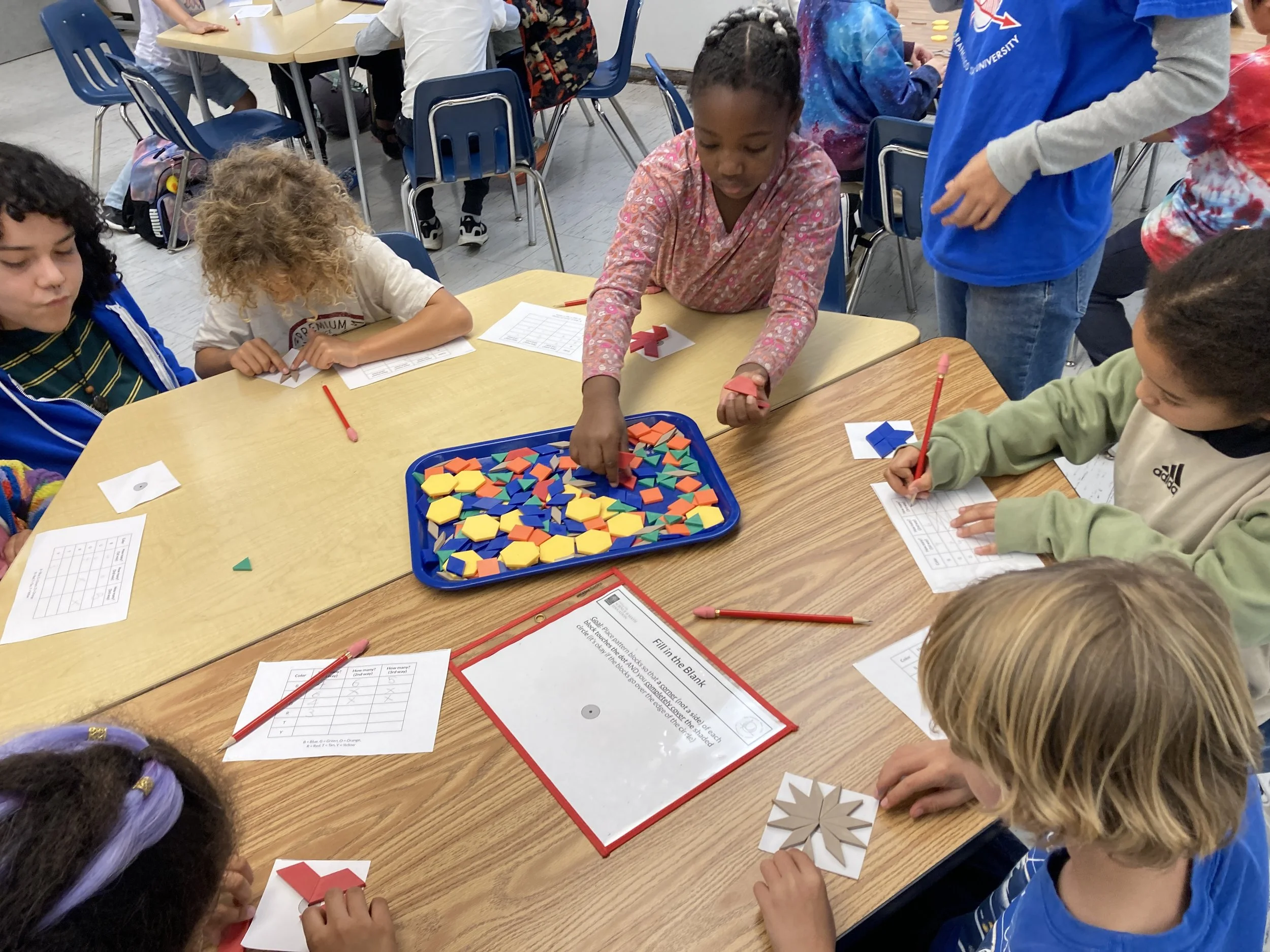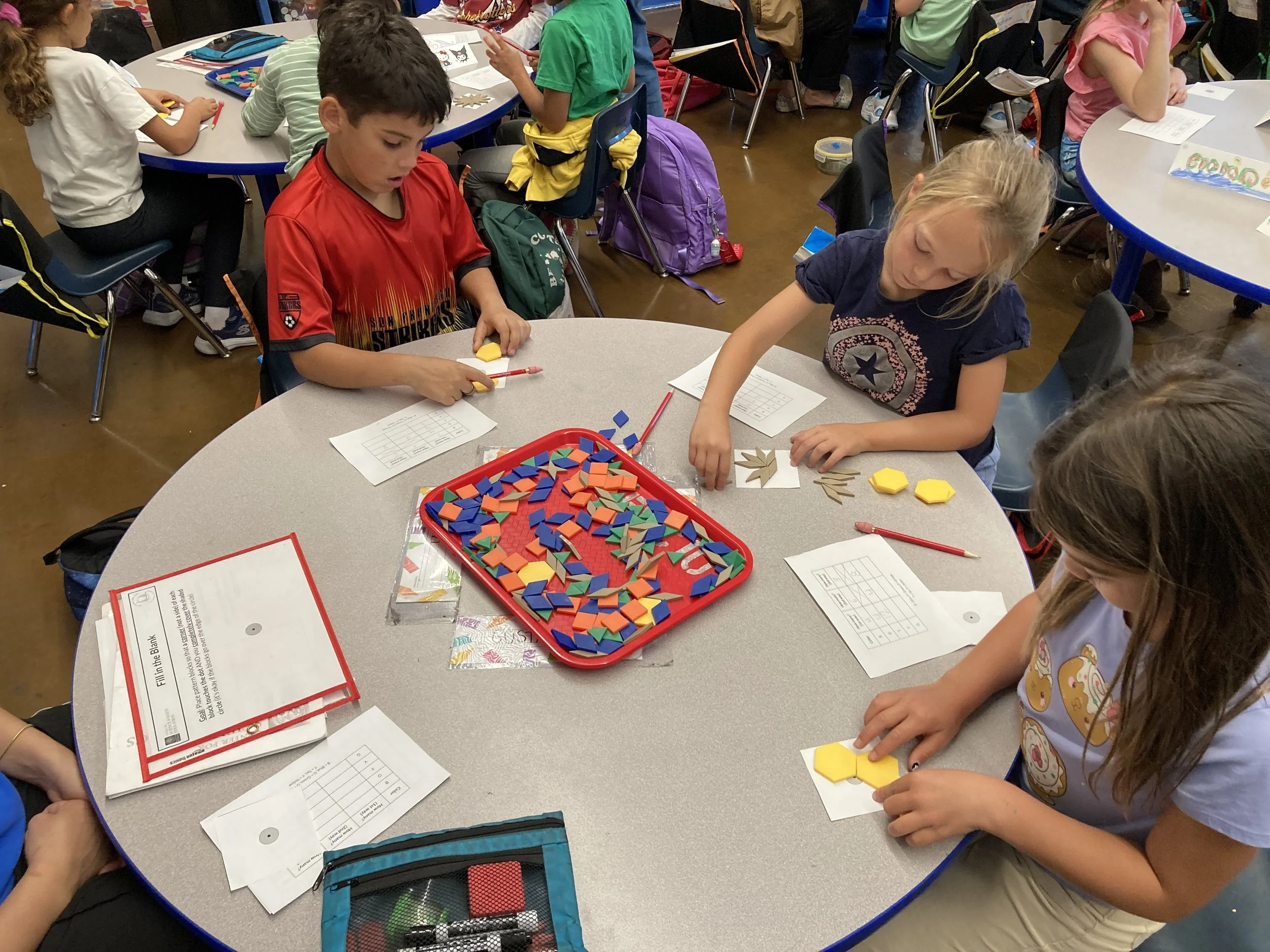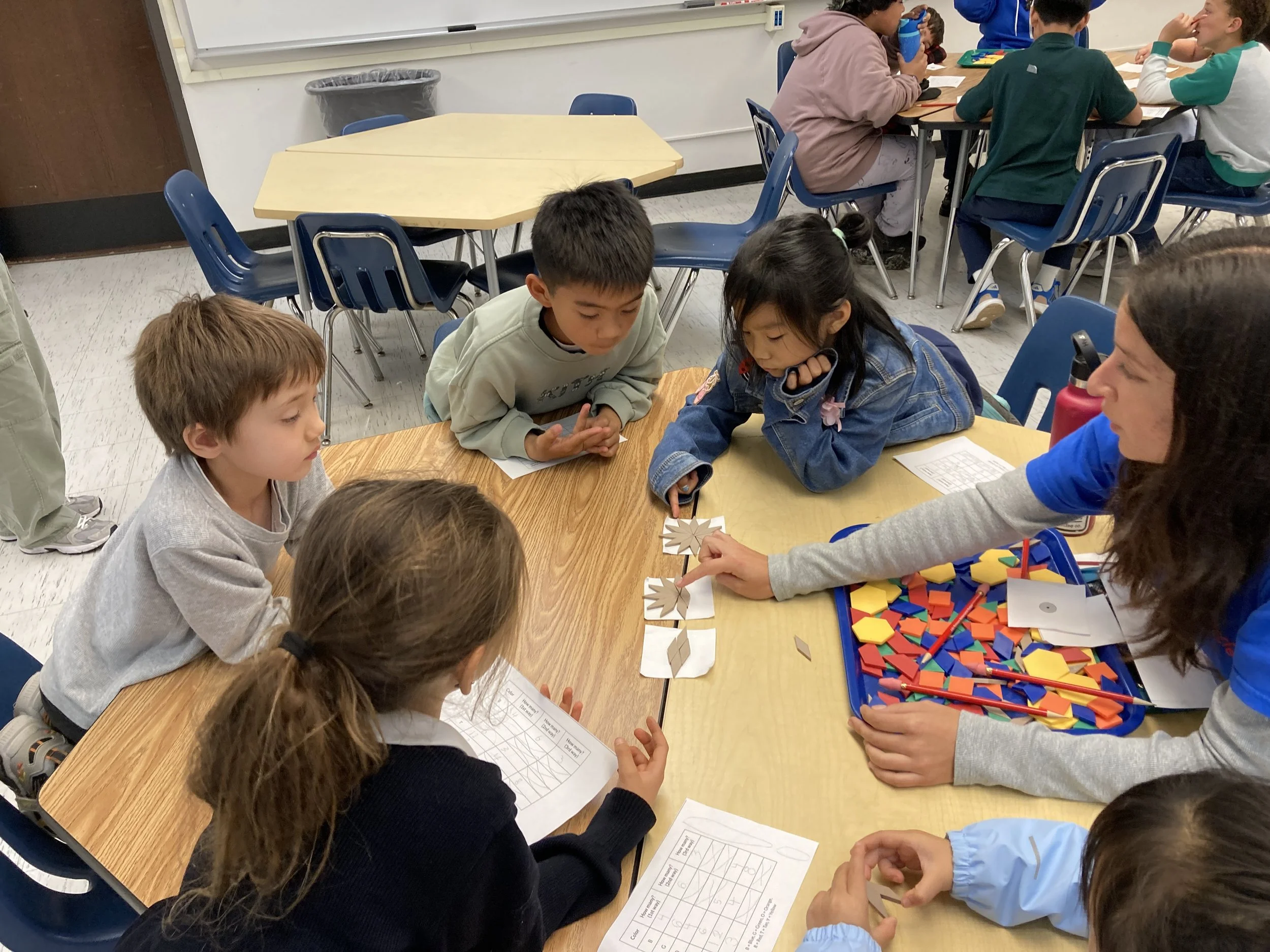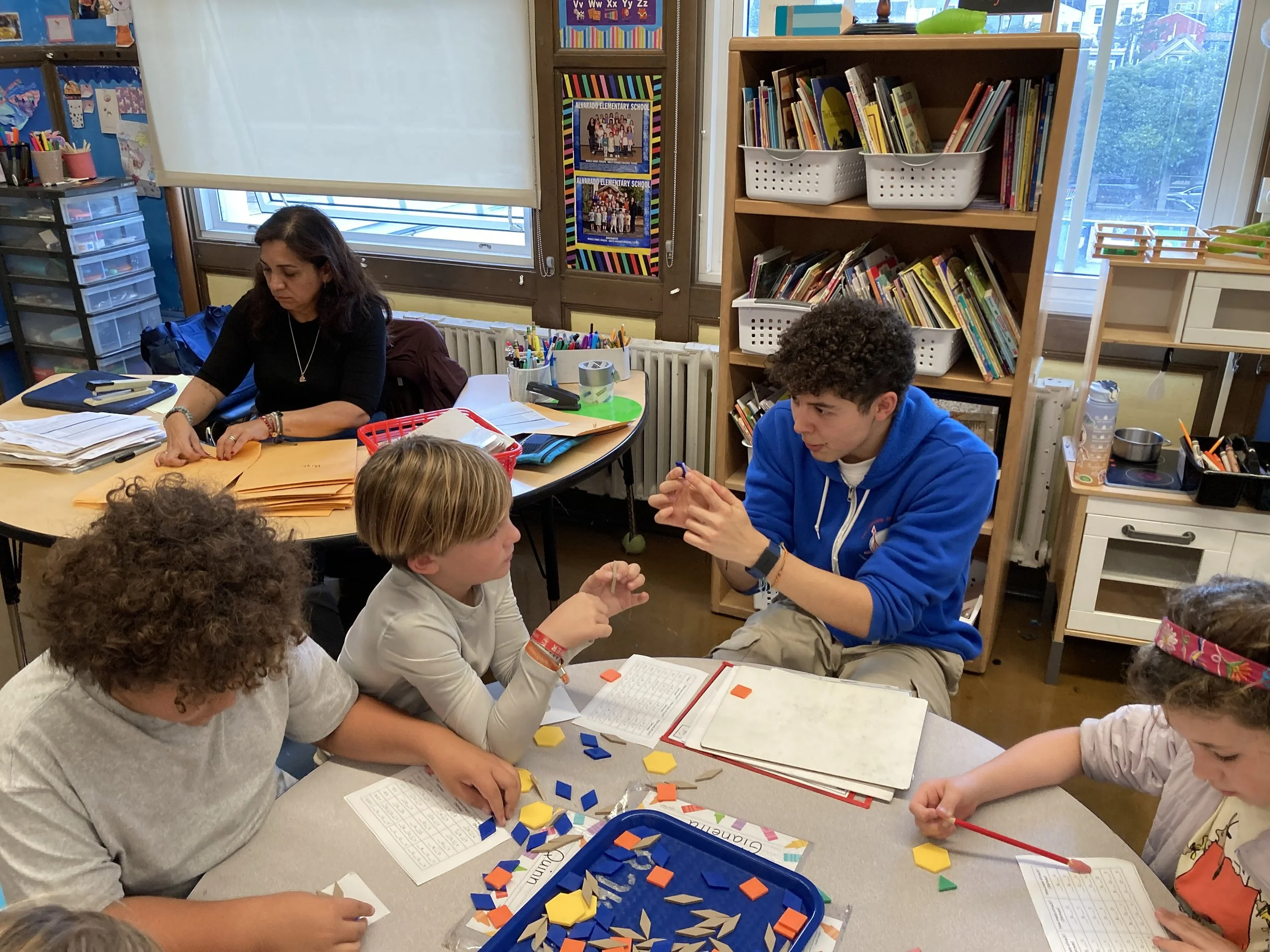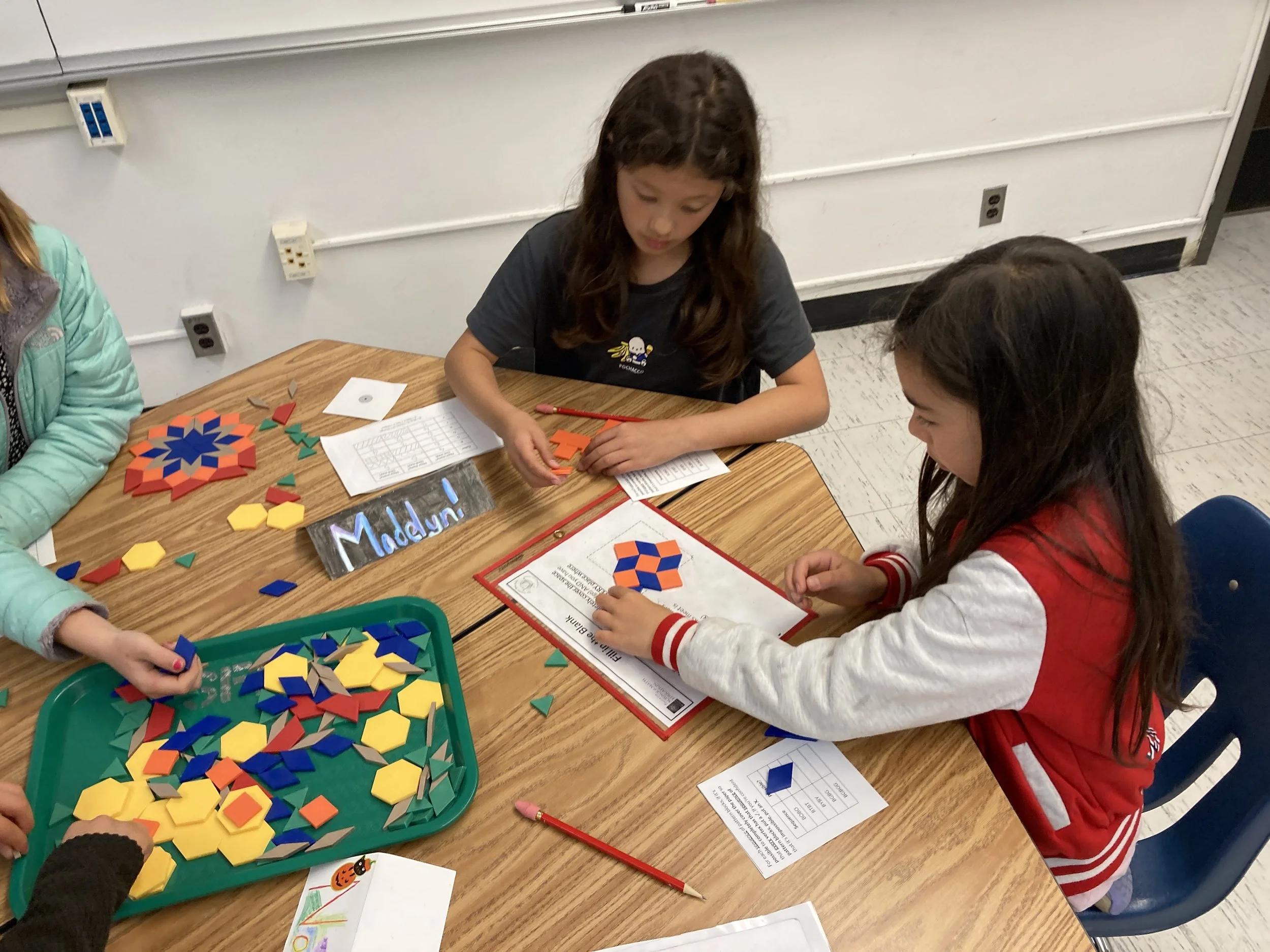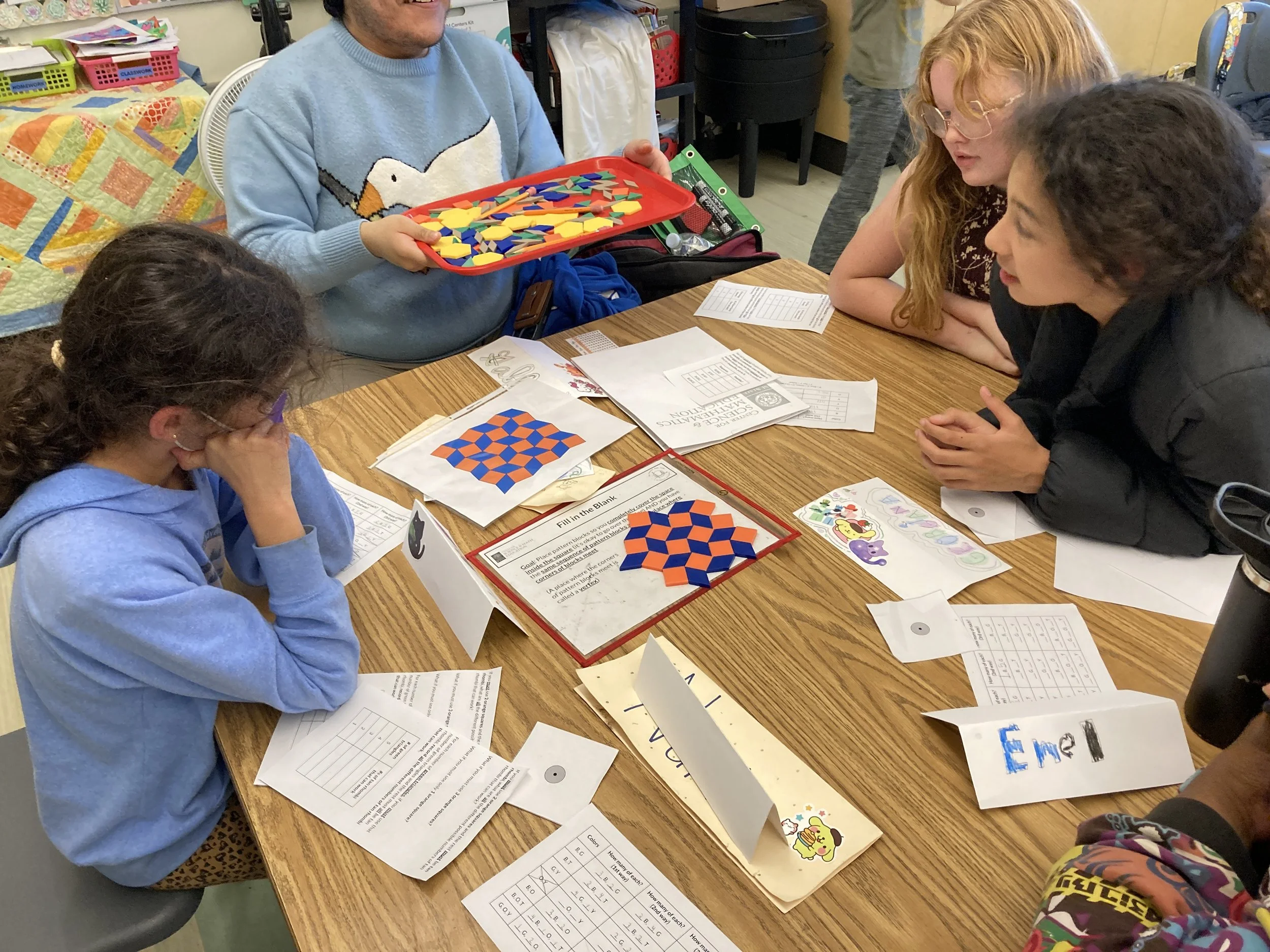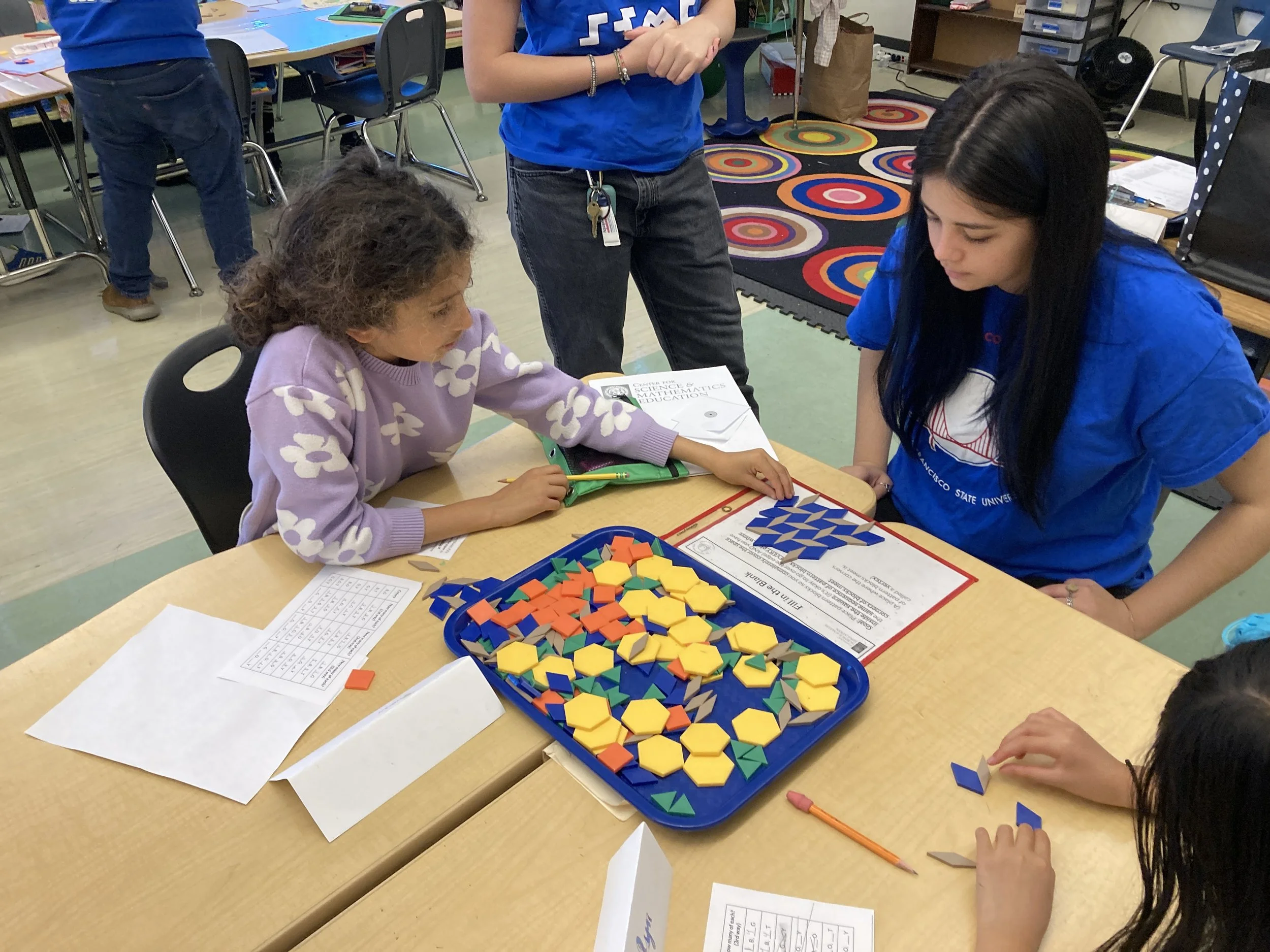Fill in the Blank
How it works
Pattern blocks come in 6 different colors and shapes:

For each type of pattern block, can you place copies of only that type of pattern block around a dot so that one corner of each block touches the dot and the blocks completely fill in the space around the dot? If so, can you do it using a different number of copies of that block? What about for combinations of different blocks?
In this activity, students first try to use copies of specific blocks to cover the space around a dot as described above. For each specific type of block, they try to find 3 different ways to do this (each using a different number of copies), and they explore when this is and isn't possible. Students then explore similar challenges using combinations of blocks instead of one specific type of block. Students also explore an extension where they try to cover a larger space with blocks so that at every point where corners of blocks meet, the blocks are arranged in the same sequence (for example, alternating rhombus / square / rhombus / square).
Vertex Sequence Challenges handout
Why we like this activity
It’s fun! Students enjoy using the blocks to attempt the different challenges.
It helps students develop geometric reasoning.
It requires students to engage in mathematical habits of mind:
Finding and using strategies to find different ways to arrange the blocks to cover the space around the dot
Using logic and understanding and explaining when trying to determine whether or not it's possible to find 3 different ways to use copies of a specific type of block (or combination of blocks) to cover the space around the dot
It has a low floor and a high ceiling: Students can get started placing blocks by trial and error, but there’s a lot to discover and figure out about how the blocks fit together to fill in the space around the dot.


